Impact Factor : 0.548
- NLM ID: 101723284
- OCoLC: 999826537
- LCCN: 2017202541
Bolodeoku J*1, Pinkney S1, Bains S1 and Andrade ML2
Received: March 26, 2018; Published: April 09, 2018
*Corresponding author: John Bolodeoku, JB Consulting (MDP) Limited, Cherwell Innovation Centre, 77 Heyford Park, Upper Heyford, Oxford shire
DOI: 10.26717/BJSTR.2018.03.000937
The objective of this review is to firstly assess the performance of commonly used automated Vitamin D measurement methods enrolled in the Randox International Quality Assessment Scheme (RIQAS) against the calculated All Laboratory Trimmed Mean(ALTM), and to secondly evaluate a new point-of-care assay, the Boditech i-CHROMA™ Vitamin D method against the calculated ALTM. The mean estimates of the following vitamin D methods were lower than the ALTM: Abbott Architect, Roche Cobas vitamin D Total, Roche Elecys, Roche Cobas 4000/e411 and Roche Modular, while the mean estimates of the following methods were higher than the ALTM: Siemens Centaur XP/XPT/Classic, Ortho Vitros, and Beckman 600/800.The mean estimates of the following methods were comparable to the ALTM: Diasorin Liaison and IDS SYS. The ALTM of all the automated vitamin D methods in the RIQAS compared very well with all the following methods:
Abbott Architect (r2=0.94), Roche Vitamin D Total (r2=0.96), Siemens Centaur XP/XPT/Classic (r2=0.97), Roche Elecys (r2=0.96), Diasorin Liaison (r2=0.84), Roche Cobas 4000/e411 (r2=0.97), IDS SYS (r2=0.86), Roche Modular (r2=0.94) and Beckman 600/800 (r2=0.93) with biases of 4.32, 14.06, -21.62, 14.64, -2.60 and 14.94, -2.18, 12.65 and 1.08nmol/L, respectively. The Ortho Vitro 3600/5600/Eci method correlated very poorly (r2=-0.011). The Beckman 600/800 method had the smallest bias (1.08 nmol/L), followed by the IDS ELISA method with a bias of -2.18nmol/L and the Ortho Vitros method the largest bias. Overall, the laboratory methods with the best combination of a very good correlation (r2> 0.9) and bias (+/- 15% bias difference) with the ALTM were the Beckman 600/800, Abbott Architect, DiaSorin Liaison and IDS ELISA vitamin D methods. The new point of care i-CHROMA™ Boditech Vitamin D method compared well (r2=0.7) with a reasonable bias of -9.97nmol/L compared to the ALTM.
Keywords: Vitamin D; POCT; I-CHROMA™; RIQAS
25- Hydroxy vitamin D (25-OH), more commonly referred to, as Vitamin D is made up of a group of anti-rachitic fat-soluble 9,10-secosteroids. It is synthesized in the skin when the body is exposed to UV sunlight, and vitamin D deficiencies have been linked to several pathologies including osteoporosis and rickets, cardiovascular disease, cancer, depression and recently, schizophrenia. There is an increasingly high prevalence of people suffering from Vitamin D deficiency worldwide [1-2]. There has therefore been an increased demand for reliable automated Vitamin D assays. Vitamin D is usually measured using immunoassays, HPLC and liquid chromatography tandem mass spectroscopy (LC-MS/MS) [3-5]. Various manufacturers including Diasorin, Abbott, Siemens, IDS SYS and Roche have more recently come into play as automated assay providers for the analysis of Vitamin D. There have been many studies carried out that have compared these assays to the traditional assays, and it seems that they are still under scrutiny for their accuracy. It has been reported that some of the assays such as the Siemens Advia Centaur tend to over-estimate Vitamin D [57], whilst the Abbott Architect and the Roche Elecsys methods tend to under-estimate [5,7].
The Diasorin Liaison has been described to both over- and under-estimate Vitamin D [5]. There is therefore still major concern over the accuracy of these newer, automated modes of Vitamin D testing. In an evaluation of 5 automated immunoassays, a radioimmunoassay (RIA), with Liquid Chromatography-Tandem Mass Spectroscopy (LC-MS/MS), the automated immunoassays demonstrated variable performances and not all the tests met the minimum performance. In samples with estimations > 20nmol/l, the following methods met the minimum performance goals: Diasorin Liaison, Siemens and IDS SYS using the LC-MS/MS as reference [8]. The aim of this article is to firstly assess the performance of commonly used automated Vitamin D methods: Abbott Architect, Roche Vitamin D Total, Roche Elecys, Siemens Centaur XP/XPT/ Classic, Roche Cobas 4000/e411, Ortho Vitro, IDS SYS and Diasorin Liaison enrolled in the Randox International Quality Assessment Scheme (RIQAS) against the calculated All Laboratory Trimmed Mean ((ALTM) and to secondly evaluate a new point-of-care assay, the i-CHROMA™ Vitamin D method against the ALTM.
Table 1: Number of laboratories that submitted returns for each Vitamin D method.
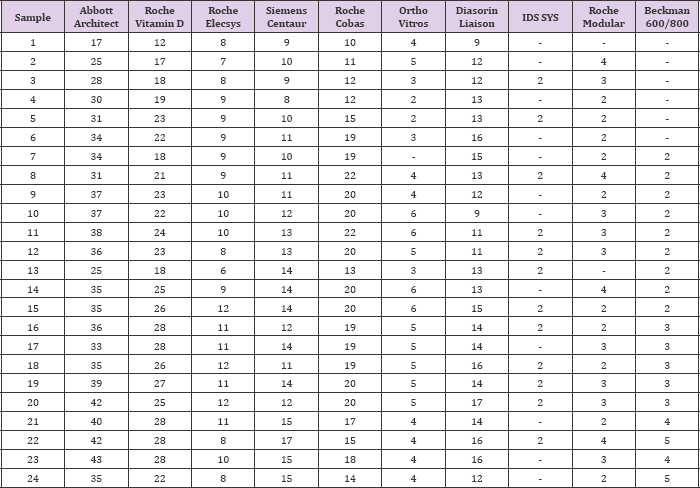
The average number of laboratories using the Abbott Architect (n= 30), Roche Vitamin D (n=20), Roche Elecsys (n=9), Roche COBAS® 4000/e411 (n=16), Siemens Centaur XP/XPT/Classic (n=13), Diasorin Liaison (n=13), IDS SYS(n=2) Ortho Vitros (n=2) roche modular (n=3) and Beckman 600/800 (n=3)that submitted results ranged for RIQAS distributions 40 and 41, samples 1 - 12 (Table 1). The mean Vitamin D results of the different laboratories using the Vitamin D Abbott Architect, Roche Vitamin D Total, Roche Elecys, Siemens Centaur XP/XPT/Classic, Roche Cobas 4000/e411, Ortho Vitro and Diasorin Liaison method registered with the RIQAS for distributions 40 and 41, samples 1 - 12 were extracted from the database. The ALTM was calculated from the means of all the methods for Samples 1-12 of Cycles 40 and 41 of the RIQAS scheme. For second part of the study samples 1-12 of Cycles 40 and 41 of the RIQAS scheme were purchased from RIQAS, reconstituted and analysed for Vitamin D using the i-CHROMA™ Vitamin D method as described in Vitamin D concentration estimations. The results of the i-CHROMA™ Vitamin D method were then compared with the calculated ALTM.
i-CHROMA™ Vitamin D method uses a sandwich immunodetection principle, such that the fluorescence-labelled detector antibody binds to the target protein in the sample. The sample is then applied onto a test strip and the fluorescence labelled antigen- antibody complex is captured by a second antibody embedded in the solid phase. The signal intensity of fluorescence of the captured complex is directly proportional to the amount of Vitamin D present and thus allows for the calculation of sample Vitamin D concentration and the result is displayed on the reader as ng/mL (conversion factor: 2.5 x ng/ml = nmol/l) for Vitamin D.
The assay was performed following the manufacturer's instructions:
a. Place the test cartridge into the i-chamber slot, which has been set at 35oC.
b. Transfer of 50μL of releasing buffer into a sample mixing tube and add 50μL of sample to sample mixing tube containing releasing buffer and mix well by pipetting 10 times.
c. Insert the sample mixing tube into the inserting block in the i-chamber and leave the tube in the inserting block at 35oC for 5 mins.
d. Add 100μL of detection buffer to the sample mixing tube containing the releasing buffer and sample mixture. Mix well and leave in the inserting block again at 35oC for 15 mins.
e. Draw 75 μL of incubated material into the sample well on the test cartridge and push into i-Chamber and leave for 8 mins.
f. Immediately insert the test cartridge into the cartridge holder of the i-CHROMA™ reader and press the 'Select' button and read the result on the display screen.
The Randox international quality assessment scheme used by 40,000 laboratories worldwide. Helps laboratories to meet their quality requirements and provide best patient care. The ALTM was calculated by taking the average of all Vitamin D samples 1-36 obtained from using all vitamin D methods. The R2 value was calculated by taking the average of the vitamin D methods compared with the ALTM. The Bias was calculated by taking the average of all the differences between samples using the vitamin D method vs the ALTM.
From the RIQAS information provided, the average number of laboratories using Abbott Architect, Roche Total Vitamin D, Roche Elecys, Siemens Centaur XP/XPT/Classic, Roche COBAS® 4000/ e411, Ortho Vitros, Diasorin Liaison, IDS SYS ELISA, Roche Modular and Beckman 600/800 vitamin D methods that submitted returns for the distribution samples were 35, 25, 10, 13, 18, 5, 14, 2, 3, 3 respectively indicating that the Abbott Architect and the Roche Vitamin D Total are the commonest methods used with the IDS SYS being the least common method used (Figure 1). The mean Vitamin D results from all ten registered Vitamin D methods was calculated: Abbott Architect (n=24), Roche Vitamin D Total (n=24), Siemens Centaur XP/XPT/Classic (n=24), Roche Elecsys (n=24), Diasorin Liasion (n=24), Roche COBAS® 4000/e411 (n=24), Ortho Vitros 3600/5600/ECi (n=23), IDS SYS (n= 12), Roche Modular (n=21) and Beckman 600/800 (n=17] (Table 2].
Figure 1: Pie chart to show the average number of laboratories that use listed Vitamin D methods.

Table 2: Mean Vitamin D levels for all methods (nmol/L) and all laboratory trimmed mean (ALTM) and standard deviations.
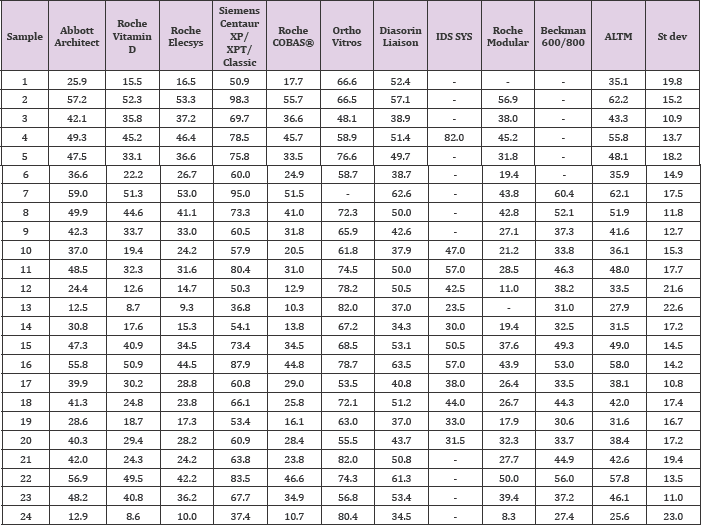
The mean estimates of the following vitamin D methods were lower than the ALTM: Abbott Architect, Roche Cobas vitamin D Total, Roche Elecys, Roche Cobas 4000/e411, while the mean estimates of the following methods were higher than the ALTM: Siemens Centaur XP/XPT/Classic, Ortho Vitros, Roche Modular and Beckman 600/800.The mean estimates of the following methods were comparable to the ALTM: Diasorin Liaison and IDS SYS (Figure 2). The ALTM of the automated vitamin D methods in the RIQAS compared very well with all the following methods: Abbott Architect (r2=0.94), Roche Vitamin D Total (r2=0.96), Siemens Centaur XP/ XPT/Classic (r2=0.97), Roche Elecys (r2=0.96), Diasorin Liaison (r2=0.84), Roche Cobas 4000/e411 (r2=0.97), IDS SYS (r2=0.86), Roche Modular (r2=0.94) and Beckman 600/800 (r2=0.93)with biases of 4.32, 14.06, -21.62, 14.64, -2.60 and 14.94, -2.18, 12.65 and 1.08 nmol/L, respectively. The Ortho Vitro 3600/5600/Eci method correlated very poorly (r2=-0.011). The Beckman 600/800 method had the smallest bias (1.08nmol/L), followed by the IDS SYS method with a bias of -2.18nmol/L and the Ortho Vitros method the largest bias (-23.67nmol/L) (Table 3).
Figure 2: Box and whisker plots of laboratory vitamin D methods and the all laboratory trimmed mean (ALTM).
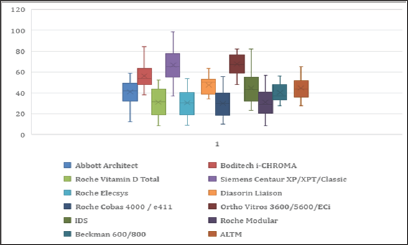
Table 3: R2 value, bias, bias difference, p value and n values of all tested methods vs all laboratory trimmed mean (ALTM).

Although, the Roche Vitamin D Total, Siemens Centaur XP/XPT/ Classic, Roche Elecys, Roche Cobas 4000/e411, Roche Modular Vitamin D methods achieved a good correlation with the ALTM of the RIQAS apart from Ortho Vitros methods. They did not meet the criteria of a very good correlation (r2> 0.9) and bias (+/- 15% difference). The laboratory methods with the best combination of a very good correlation (r2> 0.9) and bias (+/- 15% difference) with the ALTM in the RIQAS were the Abbott Architect, Diasorin Liaison, IDS SYS and Beckman 600/800 vitamin D methods. The ALTM compared well with the new point of care test Boditech i-CHROMA™ Vitamin D method: (r2=0.7) (Figure 3) with a reasonable bias of -9.97nmol/L (Figure 4).
Figure 3: Comparison of the Boditech i-CHROMA™ vitamin D method with the ALTM.
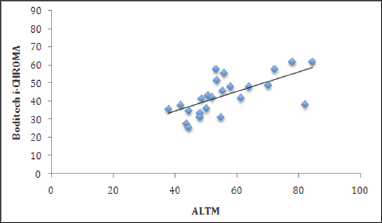
Figure 4: Bland-Altman difference chart of Boditech i-CHROMA™ vs the ALTM.
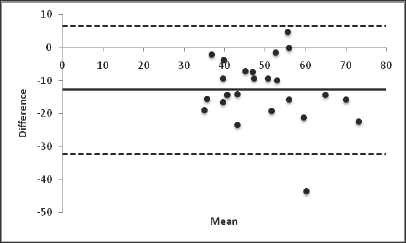
Based on the number of laboratory vitamin D methods that were submitted to the RIQAS, the Abbott Architect and Roche Vitamin D Total methods constitute the most common methods, 28% and 20%. The IDS SYS, Roche Modular and Beckman 600/800 were the least common methods making up 2% each of the total methods. The first observation of this assessment showed that except for the Ortho Vitros 3600/5600/ECi method there was a good overall correlation between all the other methods: Abbott Architect (r2=0.94), Roche Vitamin D Total (r2=0.96), Siemens Centaur XP/ XPT/Classic (r2=0.97), Roche Elecys (r2=0.96), Diasorin Liaison (r2=0.84), Roche Cobas 4000/e411 (r2=0.97), IDS SYS (r2=0.86), Roche Modular (r2=0.94) and Beckman 600/800 (r2=0.93) and the Boditech i-CHROMA™(r2=0.7)Vitamin D methods with the ALTM.
Similar correlations were also observed in three other comparative studies of automated vitamin D methods compared with LC-MS/MS methods: Farrell et al. [6,7] Abbott Architect, DiaSorin Liaison, IDS SYS, Roche E170, Siemens Centaur [8]; Janssen et al. [9] DiaSorin RIA, Diasorin Liaison, Roche Cobas Total Vitamin D, IDS ISYS, Siemens Advia Centaur, Abbott Architect i1000 and i2000 methods [9] and Freeman et al. [10] Siemens Advia Centaur, Diasorin Liaison, Roche Elecys and Abbott Architect methods [10]. In this study using the RIQAS submissions compared with the ALTM, the methods with least biases (<10%) were the Beckman 600/800 method 1.08nmol/L (2.63%), the IDS SYS method -2.18nmol/L (-5.14%), DiaSorin Liaison -2.60nmol/L (-5.78%) and the Abbott Architect 4.32nmol/L (9.59%). In the Farrell et al. [6,7] study, the DiaSorin Liaison method also had the smallest bias (-0.5nmol/L) compared to the LC-MS/MS method [8]. The Janssen et al study showed that the DiaSorin RIA method had the smallest bias (0.3nmol/L) compared to the LC-MS/MS method [9].
In addition, the Freeman et al. [10] study, the Siemens Advia Centaur method had the smallest bias (-6.8nmol/L) [10]. The methods that showed the largest biases were the Ortho Vitros3600/5600/ECi method -23.67nmol/L (-53.49%), Siemens Centaur XP/XPT/Classic -21.62nmol/L (-48.05%), Roche COBAS® 4000/e411 14.94nmol/L (33.19%), Roche Elecsys 14.64nmol/L (32.54%) and Roche Modular 12.65nmol/L (28.96%). In the comparative studies with LC-MS/MS, the methods with the largest bias were the Abbott method bias (11.4nmol/L), the Siemens Advia Centaur method bias (-10.7nmol/L) and Abbott Architect method bias (-18nmol/L) [8-10]. The observations of the RIQAS assessment were not too far from the data observed in the comparative studies, although some of the comparative studies did not cover as many methods. The DiaSorin Liaison vitamin D method was the most consistent method with the smallest bias in the RIQAS evaluation and the other comparative studies compared to LC-MS/MS method or ALTM.
The Siemens XP/XPT/Classic method had the largest bias in the RIQAS evaluation compared to the ALTM but the Abbott Architect method appears to be the method with the largest bias in the comparative studies to the LC-MS/MS. In the introduction, we described that assays such as the Siemens Advia Centaur tend to over-estimate Vitamin D [5-7], whilst the Abbott Architect and the Roche Elecsys methods tend to under-estimate [5,7]. The Diasorin Liaison has been described to both over- and underestimate Vitamin D [5]. In this RIQAS evaluation, we confirmed these observations as the Siemens Centaur XP/XPT/Classic method, reported a mean value higher than the ALTM, while Abbott Architect and the Roche (Vitamin Total, Elecsys, Cobas 4000/e411 and Modular) methods all reported means lower than the ALTM. The DiaSorin Liaison method mean was similar to the ALTM.
In the RIQAS evaluation, the laboratory methods with the best combination of a very good correlation (r2>0.9) and bias (+/-15% bias difference) with the ALTM were the Beckman 600/800, Abbott Architect, Dia Sorin Liaison and IDS SYS vitamin D methods. In a study, of 170 randomly selected patient samples and Vitamin D was measured using a similar number of laboratory methods, Farrell et al. [6,7] concluded that the DiaSorin Liaison, the IDS SYS and the Siemens Centaur methods were the 3 methods that met the minimum performance goal for the measurement of vitamin D [8]. In a recent review article, the DiaSorin Liaison and Abbott Architect methods were described to have performed well based on a 2009 proficiency testing survey, these methods failed to perform as well in the 2012 proficiency survey, where the IDS SYS method performed well [11].
In conclusion, using the data from the RIQAS evaluation, which was compared to the ALTM, and the most extensive Vitamin D method comparison study which was compared to LC-MS/MS [8], there appears to be some concordance that the best performing Vitamin D methods are the Dia Sorin Liaison and the IDS SYS. The other methods that follow are the Abbott Architect, Siemens Centaur and the Beckman 600/800. Point of Care Tests (POCT) are becoming quite common and in this evaluation, a new POCT method, Boditech i-CHROMA™ Vitamin D method provides us with some insight into how rapidly this field is growing. The Boditech i-CHROMA™ Vitamin D method compared well with the ALTM (r2=0.7) but not as good as the other methods apart from the Ortho Vitros 3600/5600/ECi method. The Boditech i-CHROMA™ Vitamin D method also had reasonable bias of -12.84nmol/L (-29.58%). This method therefore still requires further investigation in the clinical setting.


